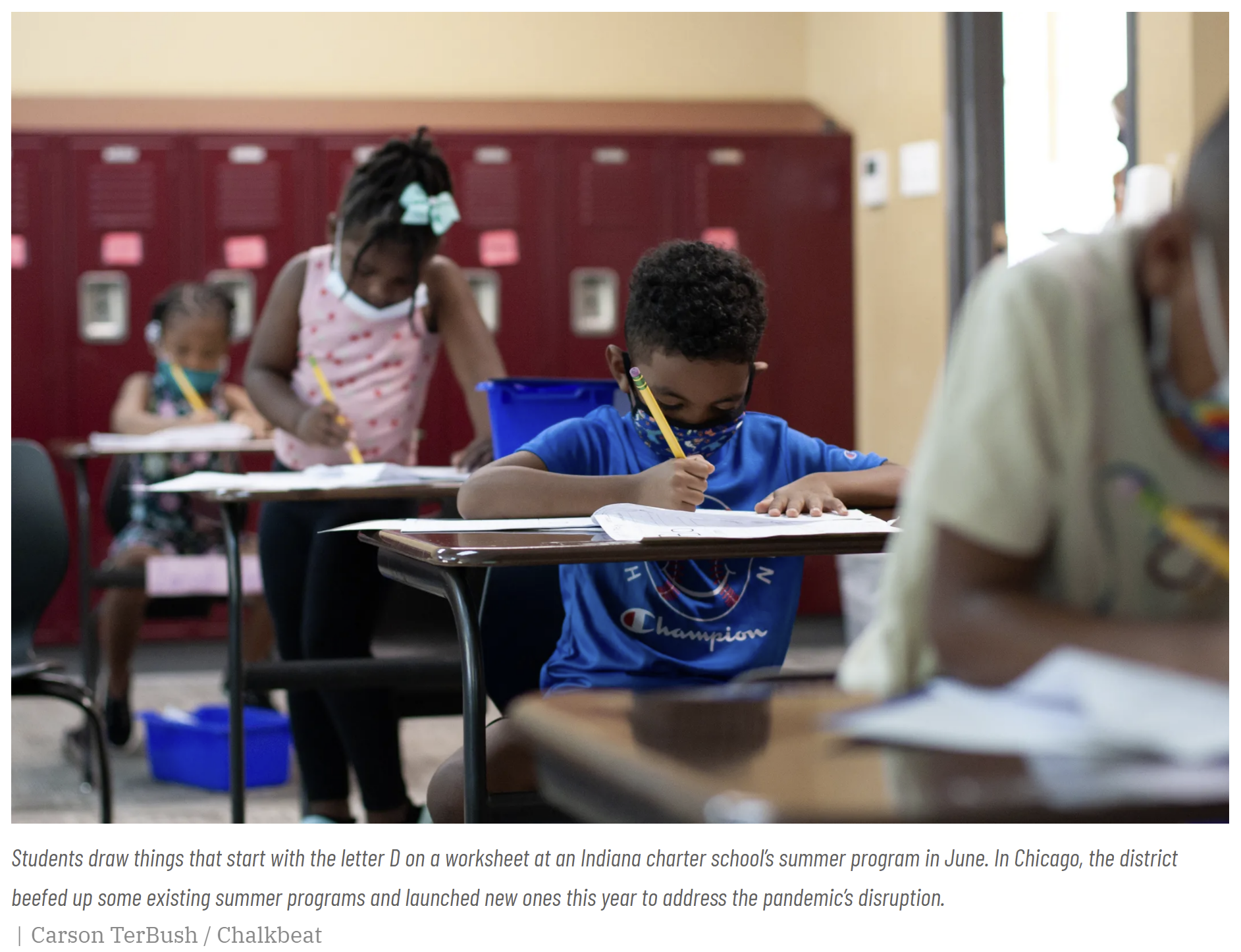“Susana Salgado’s sixth grader was one student the district had hoped to recruit. Instead, he sat out the summer program.
The boy struggled with virtual learning last school year, falling behind academically amid technical issues and other hurdles. Last spring, Salgado found out he was flagged as a good candidate for summer school.
With the district opting to automatically promote all elementary students to the next grade, the Summer Bridge was not a requirement, officials explained, but would be a chance to get caught up ahead of the new school year.
Then Salgado found out the program would not be offered at James Otis World Language Academy, the West Side school her son attends. She says the school could not tell her which campus would host that program. It also wasn’t clear if he would receive a computer to do summer school work. And the family would be on the hook to provide transportation. (Otis did host in-person and virtual extended school year programs for students with disabilities and a program for English learners.)
Salgado says COVID safety was a major concern for her family, which had decided to stick with remote learning when campuses reopened for some in-person instruction last spring. What safety measures would the district take during summer school? And could she trust an unfamiliar school to implement them?
‘We decided we wouldn’t attend — even if our child repeats his classes,’ she said in Spanish. ‘I know of many parents who told me the same thing. It was a difficult situation. But safety is the most important thing for our family.’
Districts across the country set out to expand and rethink summer school last spring to start reengaging students such as Salgado’s son, many of them tapping federal dollars from President Biden’s American Rescue Plan.”
Read full article here.
